Our exhibition ‘Through Our Eyes’ features the stories of nine extraordinary women who survived the Holocaust or came to the UK as Holocaust child refugees.
Iby Knill BEM
Iby grew up in Bratislava, then in Czechoslovakia, where she lived a cultured life, spoke multiple languages and flourished at school. After the German occupation of Czechoslovakia the Jewish population were forced to wear yellow stars which Iby hated. In 1942 she fled over the border into Hungary after her mother heard a rumour that young Jewish girls were being rounded up to serve as prostitutes for the German army.
In 1944 she was deported to Auschwitz-Birkenau and was selected for forced labour. After six weeks Iby was transferred to another camp and in 1945 she was sent on forced march into Germany. The end of the war was approaching and the Nazis were emptying concentration camps of prisoners in an attempt to hide evidence of their crimes. Iby was liberated by the US Army whilst on the march.
Iby worked for the British Army as an interpreter. While in this job she met her husband Bert and came with him to the UK in 1947. Iby has had many successful careers and is the author of two books. She was awarded a BEM for her services to Holocaust education and has honorary doctorate from The University of Huddersfield.
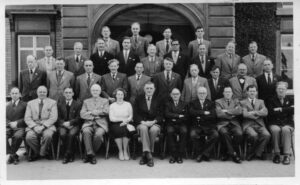
Berta Klipstein
Berta was born in Poland in 1927 and lived with her family close to the German border. When the Nazis invaded Poland the family fled East, but soon found themselves under Soviet occupation as the Soviet Union invaded the eastern part of Poland. When they refused to accept Soviet citizenship, they were transported to a gulag in Siberia where they did forced labour.
After Russia and Germany declared war on one another in 1941 Berta and her family were released and spent the rest of the war living in Uzbekistan. Berta came to the United Kingdom in 1946 where she studied Chemistry. She wasthe only female in the college, graduating in 1951 in Chemistry and Mathematics. She made a new life in Bradford with her husband and three children.
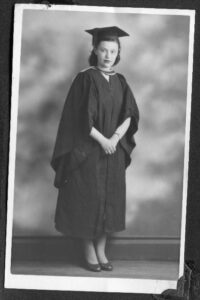
Trude Silman MBE
Trude was born Gertrude Feldmann in Bratislava, Czechoslovakia in 1929. Trude became a child refugee in 1939 after fleeing Nazism. Trude, her brother Paul and sister Charlotte, all found refuge in the UK. Her parents, however were killed in the Holocaust: Trude’s father died in Auschwitz but Trude is still trying to find out what happened to her mother.
Trude studied science at Leeds University and made a career as a bio-chemist. She met her husband at university and they had two daughters. Trude was honoured with an MBE in the Queen’s New Year’s Honours List 2020 in recognition for her work in Holocaust education.
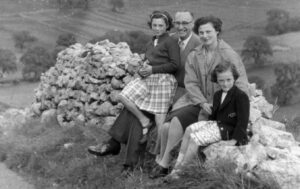
Suzanne Rappoport Ripton
Suzanne was born in Paris, France in 1936. Suzanne remembers a happy childhood with her parents until the occupation of Paris in 1940.
In 1942 the Gestapo and French police came to the family’s apartment to arrest them. Suzanne was saved by a neighbour who pretended Suzanne was her own child and took her out of the apartment.. She survived the war in hiding and was liberated in 1947, two years after the war had ended. Suzanne came to the UK to live with her grandmother. Both her parents were killed in the Holocaust.
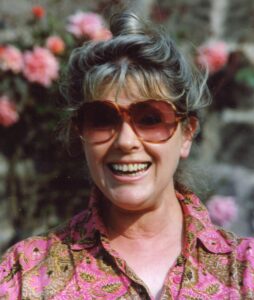
Leisel Carter
Leisel Carter was born Leisel Meier in Hildesheim, Germany in 1935. Leisel’s father was beaten up in the streets by Nazi thugs and died when she was just a baby. Leisel’s mother came to the UK on a domestic visa but was unable to bring Leisel with her. Leisel escaped Germany by travelling through Germany, Norway and Sweden before arriving in the UK. She was fostered by a couple in Leeds and started a new life here. She met her husband Terry and they had a happy life with their children in Leeds. Leisel works hard to educate people about the Holocaust.
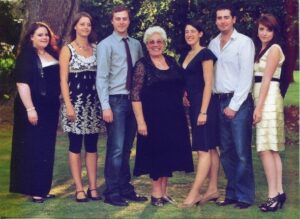
Ruth Rogoff
Ruth was born in Germany. Her family fled to Czechoslovakia in 1938 as her father had been caught helping others to escape. In Prague Ruth’s mother was offered a place on a Kindertransport for Ruth, but decided not to send her as Ruth’s brother was too young to go and she wished to keep the family together. Ruth, her mother and brother fled to the UK and arrived in Liverpool Street Station, London, on the day that war was declared. They had escaped just in time. In London they were reunited with Ruth’s father. Ruth made a new life in Leeds where she attended university to study languages.
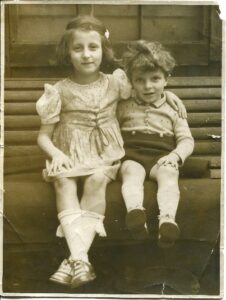
Ibi Ginsburg
Ibi was born in Hungary in 1924. In 1944 Ibi and her family were deported to Auschwitz-Birkenau. Ibi and her sister were selected for forced labour, but er mother and two younger sisters were taken directly to the gas chambers.
Ibi and her sister were in Auschwitz-Birkenau for about three months before being taken to a camp in Germany. They were then taken on a forced march to another camp, where they were liberated in 1945. After liberation Ibi worked at the Displaced Persons camp in Dachau where she met fellow survivor Val Ginsburg. They fell in love and got married before moving to the UK to make a new life. In the UK Ibi and Val worked in the textile industry and brought up their two daughters. Ibi devoted her life to Holocaust education.

Margaret Kagan
Margaret was born in Kaunas, Lithuania. Kaunas was occupied by Nazi forces in 1941, and her father was killed in a massacre carried out by Lithuanian fascists who sympathised with the Nazis. In August 1941 Margaret, her mother and brother were imprisoned in the Kaunas ghetto.
In the ghetto Margaret met Joseph Kagan. They got married and Joseph arranged for Margaret to go into hiding with him and his mother. The couple survived the war in hiding then moved to the UK where they started a new life. Joseph set up a textile business, Kagan Textiles and invented a new material called Gannex. Raincoats made of Gannex were famously worn by the Duke of Edinburgh and Prime Minister Harold Wilson. Alongside the family business Margaret was heavily involved in community cohesion work in Kirklees.

Edith Goldberg
Edith was born in Teschenmoschel, a small village in Germany, in 1928. Her family were farmers and her parents owned a small shop. Edith and her sister came to the UK on a Kindertransport arranged for Jewish children after the events of Kristallnacht made it obvious that Germany was a dangerous place for Jews. In the UK Edith and her sister were resettled in Leeds, they were fostered by different families but lived next door to one another.
Edith made a new life in Leeds with her husband Jack and their children. Sadly her parents and other family members were unable to escape Germany and were all murdered in the Holocaust.
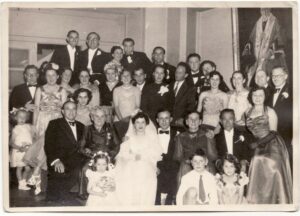
Hannah May Randall, March 2020
